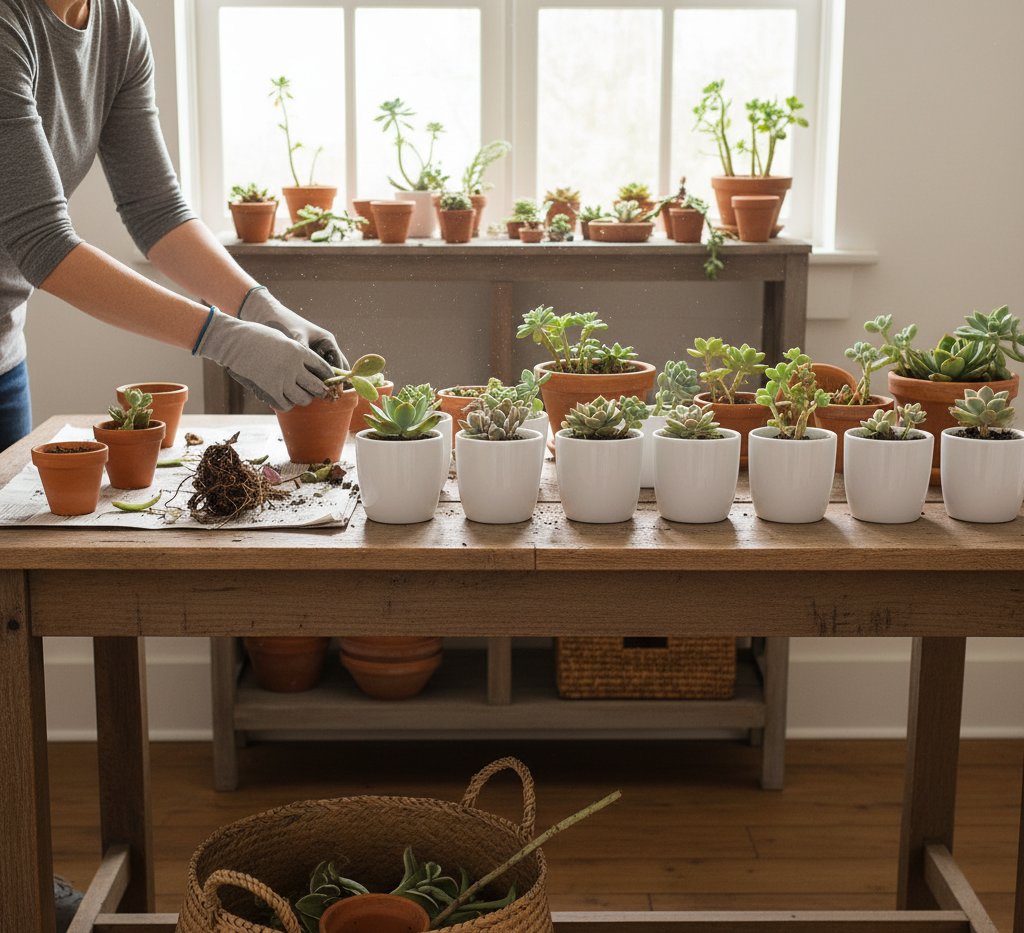Succulent Decluttering Techniques
Too many succulents in small pots or crowded trays can make your collection feel messy and hard to care for. Over time, plants outgrow their containers, weaker ones struggle, and the joy of tending them starts to fade. Decluttering your succulents means keeping only the healthiest plants, repotting where needed, and creating space for them to thrive.
You don’t need to throw away your love for succulents when the collection feels overwhelming. By focusing on simple principles, you can decide which plants to keep, which to rehome, and how to refresh the layout of your space. This process keeps your plants healthier and makes your collection easier to maintain.
Once you clear away the extras, you can reorganize your succulents into arrangements that highlight their shapes, colors, and textures. With consistent care, you’ll keep your collection clutter-free and enjoyable for the long term.
Core Principles of Succulent Decluttering
Decluttering your succulent collection helps you manage space, maintain plant health, and create a more balanced display. By focusing on intentional choices, you can reduce stress, improve care routines, and enjoy your plants without feeling overwhelmed.
Understanding Decluttering for Succulent Collections
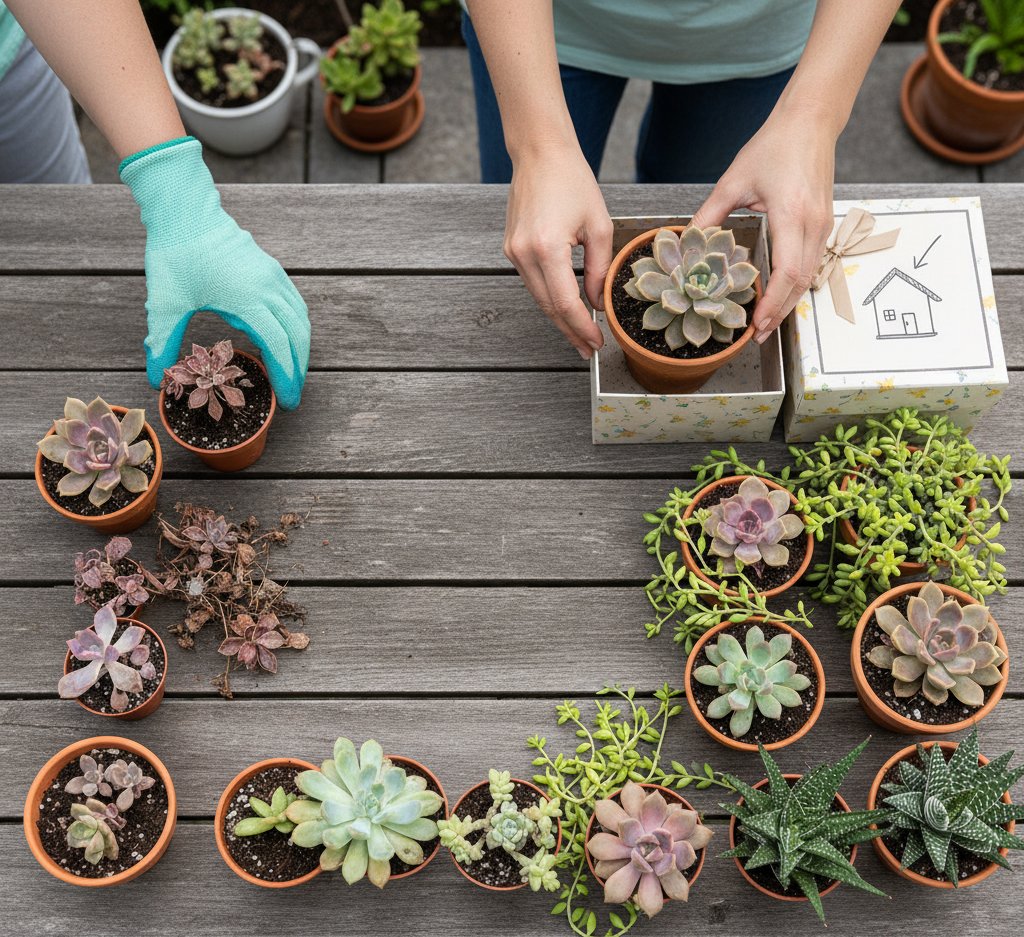
Decluttering succulents means deciding which plants to keep, which to rehome, and how to organize the ones that remain. Unlike general home clutter, living plants require ongoing care, so your choices affect both aesthetics and plant health.
You might start by grouping plants with similar needs. For example, cluster sun-loving varieties together while separating shade-tolerant ones. This makes watering and placement easier.
Another useful step is checking for duplicates. If you own several of the same type, you can keep the healthiest and give away extras. This prevents overcrowding and frees up containers.
Key actions for decluttering succulents:
- Remove unhealthy or struggling plants
- Rehome duplicates or extras
- Group by light and water needs
- Keep only what you can realistically care for
Benefits of a Streamlined Succulent Display
A smaller, well-chosen collection is easier to maintain. You spend less time watering, pruning, and repotting, and more time enjoying the plants.
Streamlined displays also improve plant health. With fewer pots crammed together, air circulation increases and pests spread less easily. Plants get more light and space for growth.
You also gain visual benefits. A tidy arrangement highlights the unique shapes and colors of each succulent. Instead of a crowded shelf, you see clear lines and balanced groupings.
Some people find decluttering reduces decision fatigue. When you have fewer plants, it’s easier to notice problems early and respond quickly. This helps prevent neglect and keeps your collection thriving.
Applying Marie Kondo and Other Popular Methods
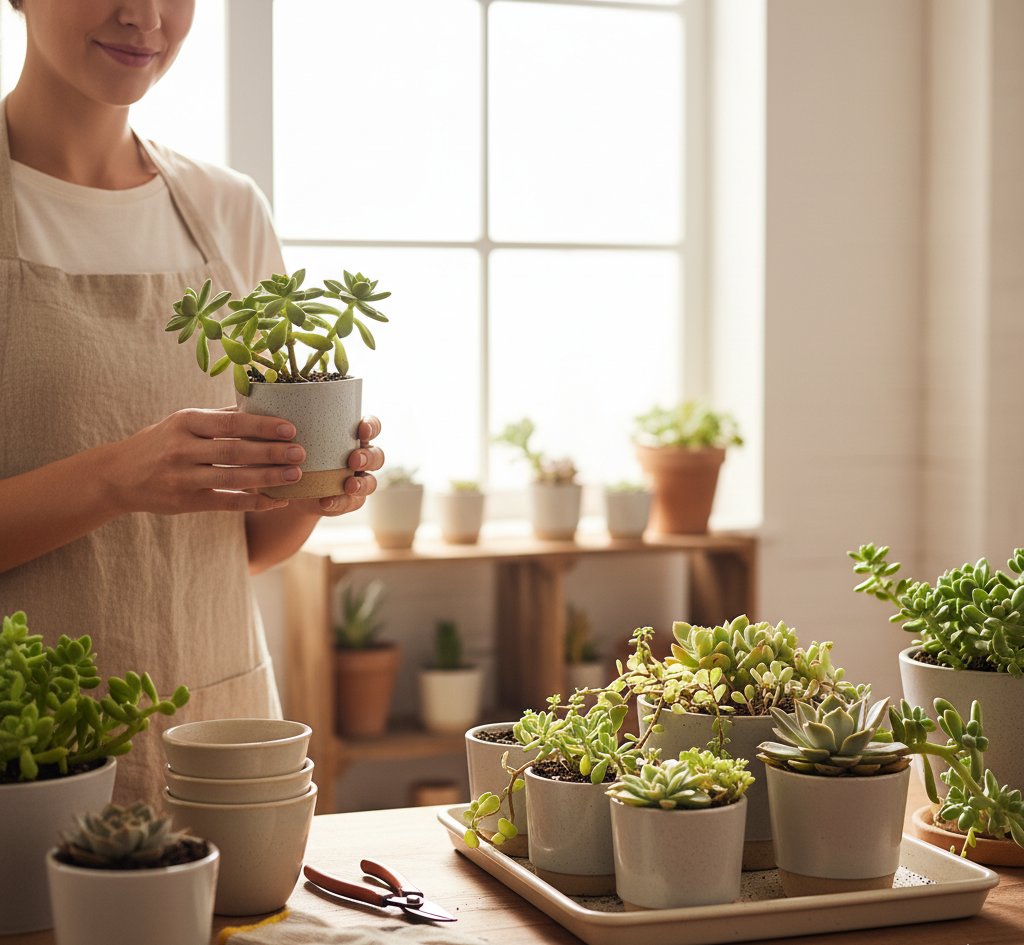
Popular decluttering methods can guide how you handle your succulents. Marie Kondo’s approach asks you to keep only items that “spark joy.” Applied to plants, this means keeping succulents you truly enjoy caring for and looking at.
Other methods, like the Core 4 Method (clear out, categorize, cut out, contain), also work well. You can clear out unhealthy plants, categorize by type or size, cut out duplicates, and contain the rest in organized displays.
You might also try the one-in, one-out rule. For every new succulent you bring home, remove one from your collection. This keeps numbers stable and prevents overcrowding.
By blending these methods, you create a system that balances enjoyment with practical care. This helps you maintain a collection that is both manageable and meaningful.
Techniques for Decluttering Succulent Collections
Decluttering your succulents means making choices that balance space, plant health, and your ability to care for them. By sorting carefully, using simple organizing methods, and deciding what to keep or share, you can maintain a collection that feels manageable and healthy.
Assessing and Sorting Succulents
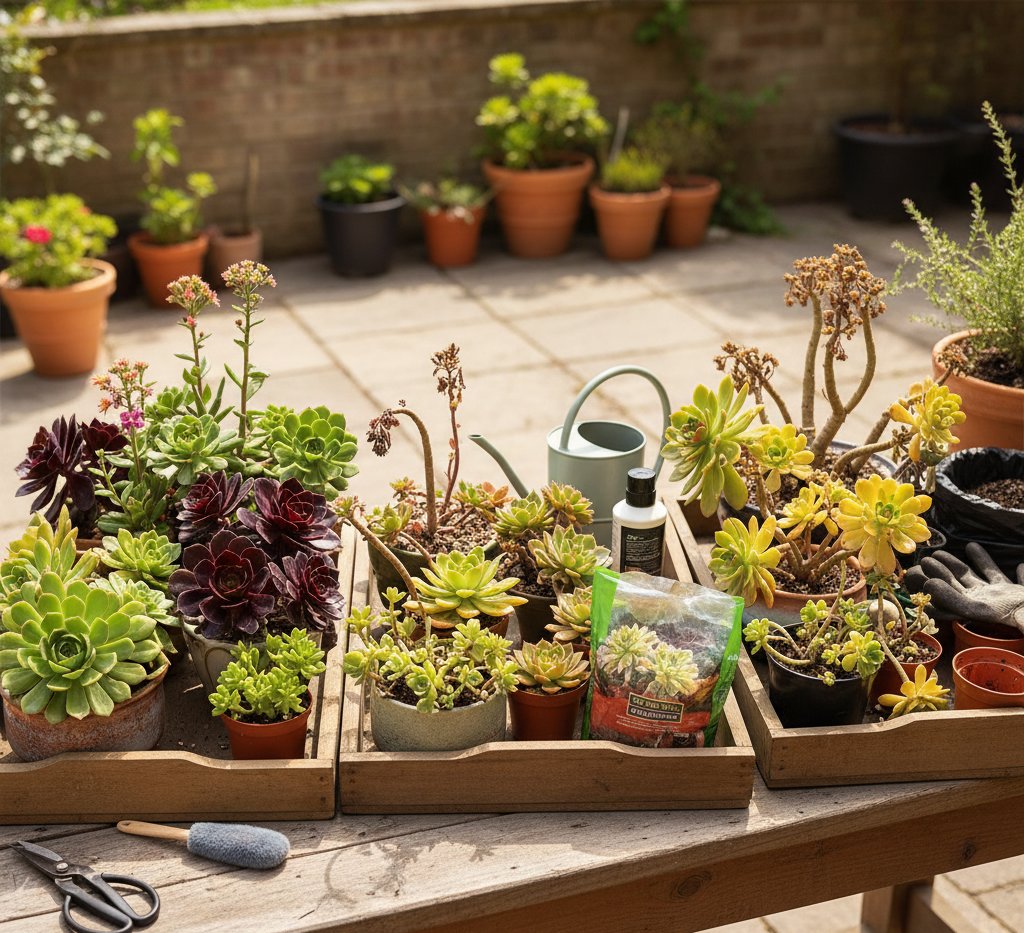
Start by looking at each plant closely. Check for signs of pests, rot, or damage. If a succulent is weak or diseased, it may not be worth keeping. Healthy plants should stay, while unhealthy ones can be discarded or composted.
Group your succulents by type, size, or care needs. This makes it easier to spot duplicates and decide if you really need multiples of the same variety.
You can also separate plants into categories such as:
- Healthy and thriving
- Needs attention
- Unhealthy or damaged
This clear sorting process helps you focus on what deserves space in your collection and what can be removed.
Implementing the Four-Box and One In, One Out Methods
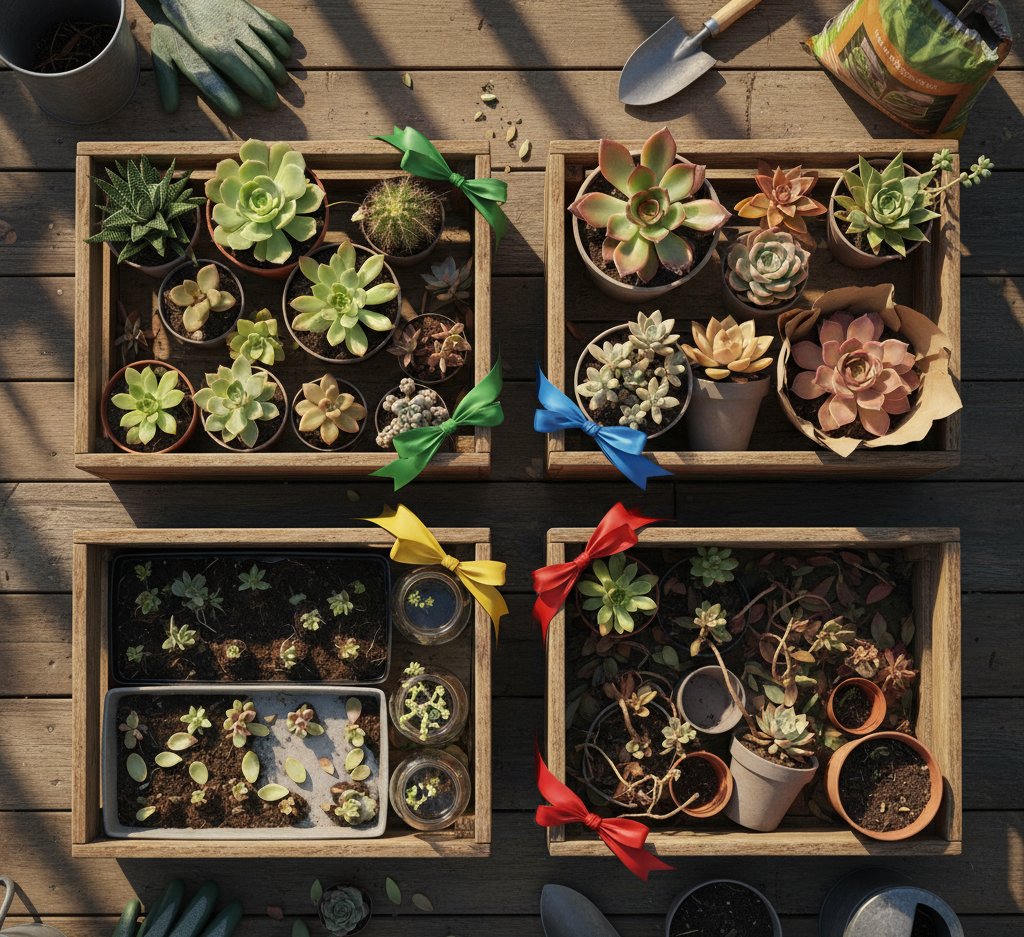
The Four-Box Method works well for plant decluttering. Label four areas or containers as: Keep, Donate, Propagate, Discard. Place each succulent into one of these categories as you sort. This system gives you structure and reduces indecision.
The One In, One Out Method is useful if you tend to buy new succulents often. For every new plant you bring in, choose one to let go. This keeps your collection from growing beyond your space or care capacity.
Both methods help you manage your collection realistically. They prevent overcrowding, which can lead to stressed plants and more maintenance than you can reasonably handle.
Deciding What to Keep, Donate, or Propagate
When deciding what stays, focus on plants you enjoy and that grow well in your environment. Keep specimens that are healthy and fit your available space.
For plants you no longer want, donating is a good option. Friends, neighbors, or local plant groups often welcome extra succulents.
If you have healthy but extra plants, consider propagation. Taking succulent cuttings allows you to grow new plants without keeping the original duplicates. This way, you can share or replant while still enjoying the variety.
By dividing your choices into keep, donate, or propagate, you can simplify your collection without waste.
Reorganizing and Arranging Succulents After Decluttering
Once you remove damaged or unhealthy plants, you can focus on rebuilding your arrangement. Pay attention to design balance, container function, and the unique needs of specific succulent types to keep your collection healthy and attractive.
Creating Visually Appealing Succulent Arrangements
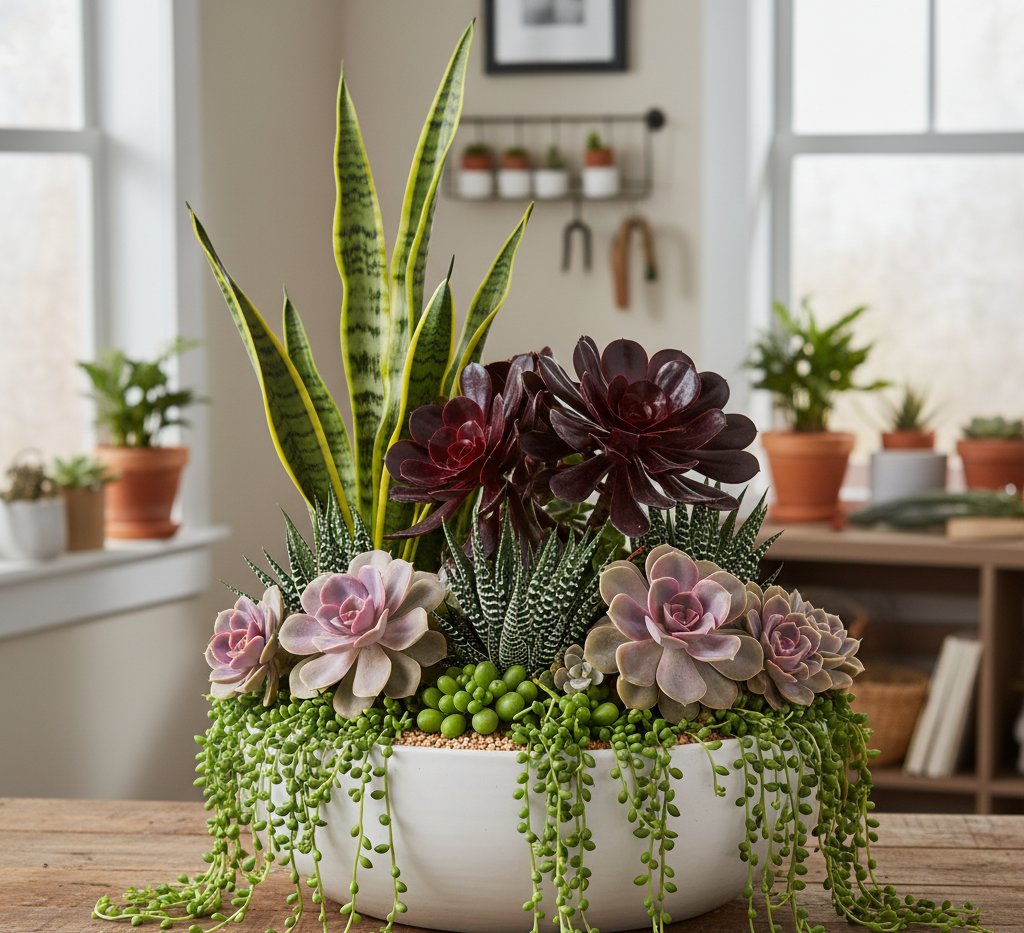
Start by grouping plants with different shapes and sizes. Place taller succulents toward the back or center, and surround them with smaller or trailing types. This layering creates depth and makes the arrangement easier to view from different angles.
Use color contrast to highlight your plants. For example, pair green rosettes with purple or blue-toned varieties. Adding a few trailing succulents at the edges softens the look and prevents a stiff layout.
Keep spacing in mind. Leave enough room between plants so they can grow without crowding. A balanced arrangement looks better and also reduces the risk of rot from overlapping leaves.
Showcasing Specific Varieties: Echeveria, Sedum, and Haworthia
Echeveria works well as a focal point because of its rosette form and wide color range. Place it in the center or slightly off-center to draw attention.
Sedum offers trailing and spreading types that fill gaps and soften edges. Use them along the rim of containers or in hanging planters for a cascading effect.
Haworthia grows more slowly and thrives in lower light compared to many succulents. Position it where it won’t be overshadowed by faster-growing plants. Its striped and textured leaves add contrast without overwhelming the arrangement.
Sustaining a Clutter-Free Succulent Space
Keeping your succulent area organized depends on steady upkeep and careful choices about what you bring in. By setting a simple routine and being selective with new plants, you can avoid overcrowding and keep your space healthy and easy to manage.
Routine Maintenance and Seasonal Reviews
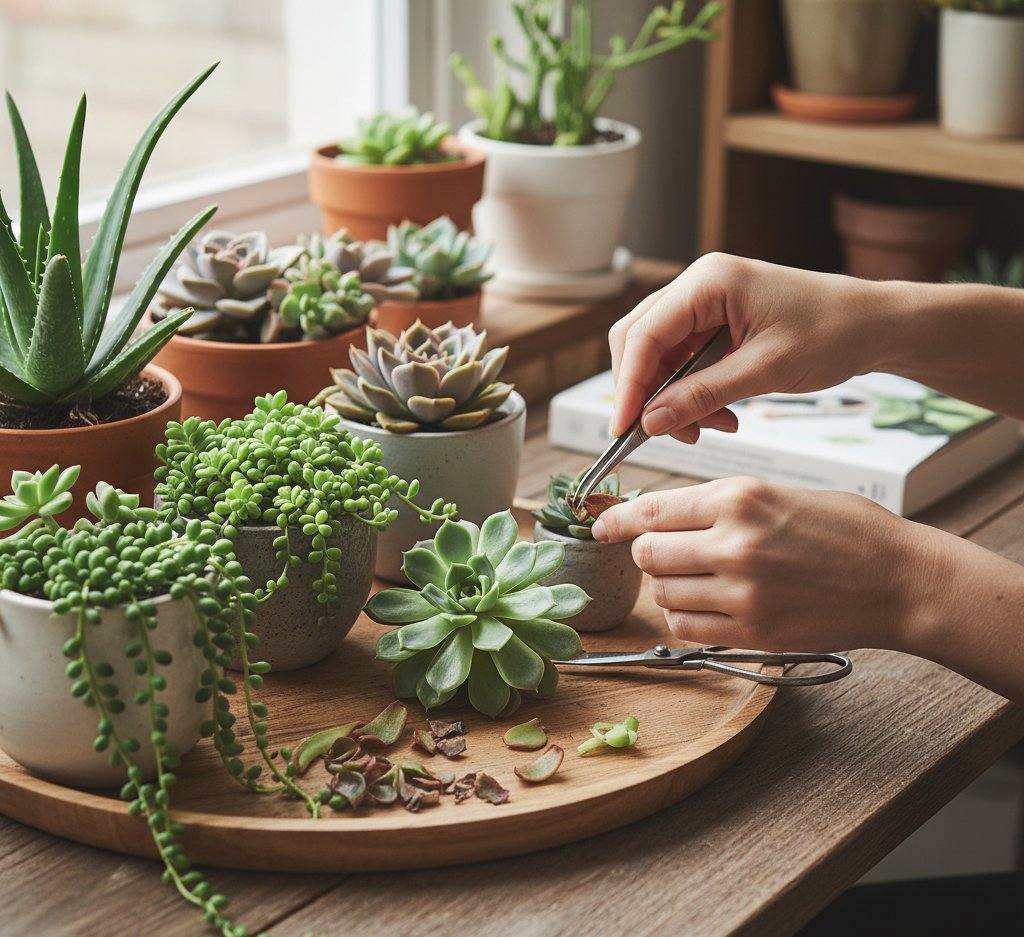
Check your succulents weekly for dried leaves, fallen cuttings, or overcrowded pots. Removing debris prevents pests and keeps the area tidy. Use small tools like tweezers or scissors to trim dead growth without disturbing healthy parts.
Every few months, review your arrangement. Rotate plants so they receive even sunlight, and repot those that have outgrown containers. This prevents root-bound plants and gives cuttings space to thrive.
A seasonal review helps you adjust watering schedules and soil conditions. For example, reduce watering in cooler months when growth slows, and refresh soil in spring to support new growth.
Keep a simple checklist:
- Trim dead leaves
- Repot overgrown plants
- Rotate containers for light balance
- Refresh soil as needed
These small steps prevent clutter and keep your succulents looking neat and healthy year-round.
Managing New Additions and Preventing Clutter
Before adding new succulents, decide where they will go. Avoid impulse purchases that lead to crowded shelves or windowsills. If you propagate cuttings, plan ahead by labeling them and setting aside only the healthiest ones to grow.
Use a “one in, one out” approach. For every new plant, consider removing or gifting one. This keeps your collection manageable and prevents unused cuttings from piling up.
Group plants by size or care needs. For example, keep small cuttings in trays until they root, then move them to permanent pots. This system avoids cluttered pots filled with too many varieties.
You can also repurpose containers for overflow cuttings, but limit how many you keep. By setting boundaries on new additions, you create a balanced collection that stays organized without constant rearranging.

